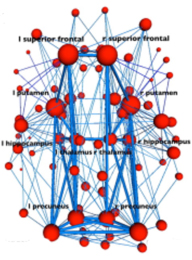Monday, 4 December 2023
The “rich club” of networks in the human brain
 What is known as the “rich club” in the human brain consists of densely interconnected regions of neurons that show little plasticity. The activity of these networks is highly stable , and the regions involved are rapidly informed of other neuronal events that occur throughout the brain . The neurons in this “rich club” may be regarded as one end of a continuum in terms of their low plasticity and the many connections that they make with other parts of the brain. The other end of the continuum consists of neurons that show a high degree of plasticity but are connected to relatively few other neurons and have a far lower level of activity. Along this continuum, just about every other possible combination of these traits can be found. It has been estimated, however, that the “rich club”, while accounting for only about 20% of the total population of neurons in the human brain , also accounts for nearly 50% of its total activity ! (more…)
What is known as the “rich club” in the human brain consists of densely interconnected regions of neurons that show little plasticity. The activity of these networks is highly stable , and the regions involved are rapidly informed of other neuronal events that occur throughout the brain . The neurons in this “rich club” may be regarded as one end of a continuum in terms of their low plasticity and the many connections that they make with other parts of the brain. The other end of the continuum consists of neurons that show a high degree of plasticity but are connected to relatively few other neurons and have a far lower level of activity. Along this continuum, just about every other possible combination of these traits can be found. It has been estimated, however, that the “rich club”, while accounting for only about 20% of the total population of neurons in the human brain , also accounts for nearly 50% of its total activity ! (more…)
From the Simple to the Complex | Comments Closed








